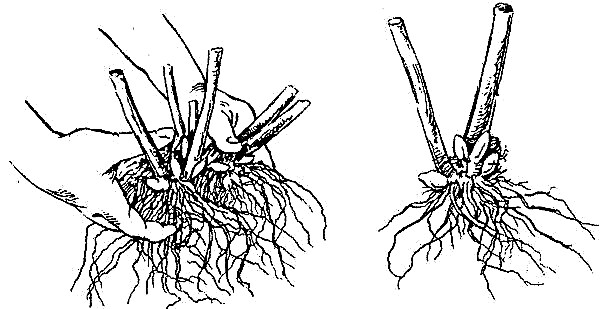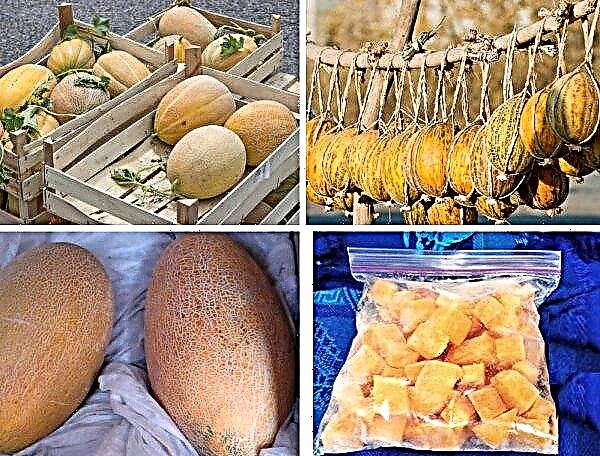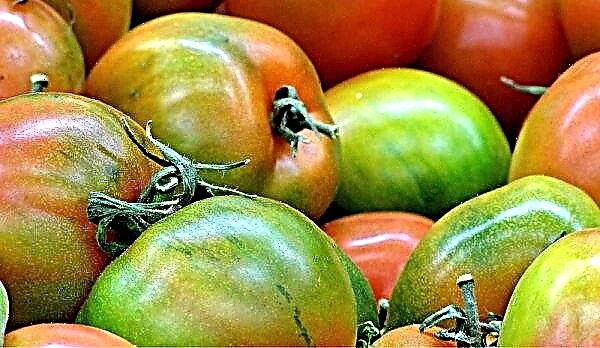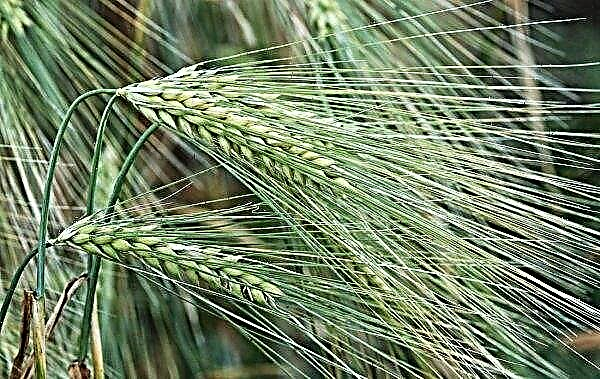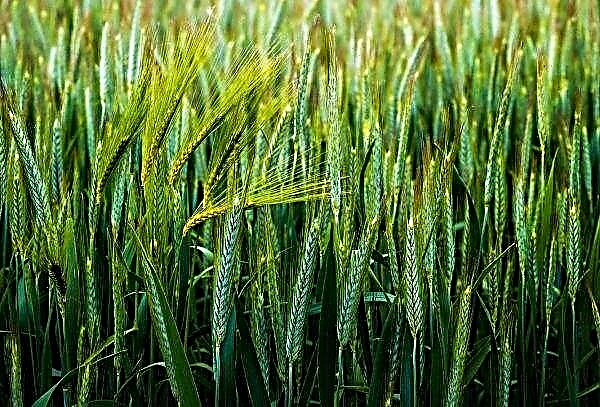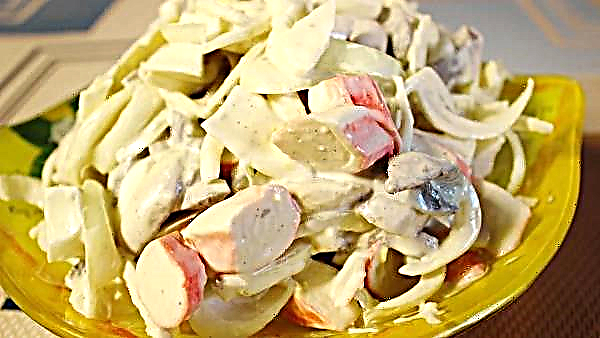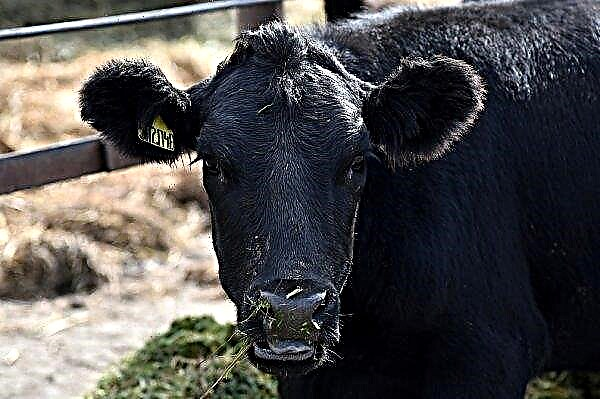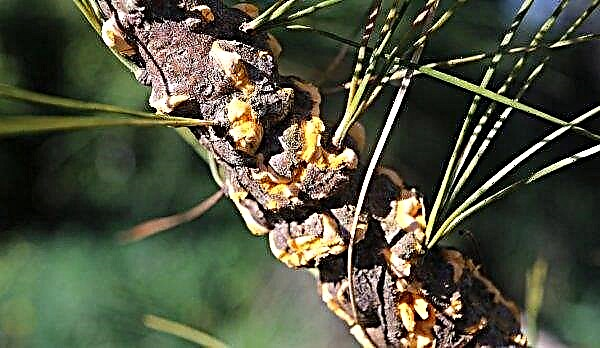In recent years, white eggplant varieties are gaining popularity among farmers. Why they have become so popular, as well as about the most common varieties and rules for caring for them, read below.
History of White Eggplant
Until a certain point, people didn’t know if eggplants were white, but traditional dark purple varieties were not particularly often cultivated in their plots until the 19th century. White eggplants were obtained by crossing varieties with a traditional dark violet color in order to improve the quality characteristics, mainly flavoring. Dark-colored vegetables contain special pigments - anthocyanins, which provide a dark color and a small amount of the poisonous compound - solanine, which gives the raw flesh bitterness. In the process of hard work, these elements were isolated and eliminated at the genetic level. As a result, white eggplant was obtained with distinctive taste and aroma of porcini mushrooms. In Russia, the first variety of white eggplant was bred by Zedek in the early 2000s. The variety was entered into the register only in 2009.
In the process of hard work, these elements were isolated and eliminated at the genetic level. As a result, white eggplant was obtained with distinctive taste and aroma of porcini mushrooms. In Russia, the first variety of white eggplant was bred by Zedek in the early 2000s. The variety was entered into the register only in 2009.
Varieties of white eggplant
Choosing an unusual variety of solanaceae for your site, you should prefer varieties with early and medium ripening, which are characterized by high fecundity and good adaptive abilities. Also, when choosing a variety, it is worth paying attention to its regionalization, since varieties intended for the southern regions will not be able to fully develop in the northern and middle lane. Below you can familiarize yourself with the best representatives of white eggplant and choose the best option.
Did you know? Wild Indian eggplant differed from the modern one in a rounded shape and a variety of colors. Fruits could have blue, yellow, white and violet color, and protective thorns were located next to the petiole on the fruits.
Iceberg
An iceberg is a mid-early specimen - 115 days pass from the sprouting of the sprouts to the phase of technical ripeness of the ovary. The plants are stunted, their height during cultivation without shelter is 40 cm, under the shelter - 45 cm. The variety has become popular due to the stable fertility and immunity to most diseases. The oblong-shaped vegetables are lightweight, about 180 g. Their length rarely reaches 20 cm. The pulp is juicy, soft-structured, seedless, exudes a piquant aroma and has a pleasant taste. Harvest freely retains useful qualities for up to 2 weeks and tolerates transportation, which is beneficial for commercial activities.
The oblong-shaped vegetables are lightweight, about 180 g. Their length rarely reaches 20 cm. The pulp is juicy, soft-structured, seedless, exudes a piquant aroma and has a pleasant taste. Harvest freely retains useful qualities for up to 2 weeks and tolerates transportation, which is beneficial for commercial activities.
White Night
The precocious hybrid ripens in 70–75 days. Compact plants reach 70 cm in height. The variety belongs to one of the most prolific specimens - from 1 m² you can collect 8-9 kg of vegetables. The variety is attractive for its low susceptibility to diseases and pests. Eggplants are large, closed in shape. They reach a length of 25 cm, their average weight is within 300 g. The skin is thin, dense structure, resistant to mechanical stress. The pulp is tender, juicy, has a pleasant aroma and a sweetish aftertaste.
Eggplants are large, closed in shape. They reach a length of 25 cm, their average weight is within 300 g. The skin is thin, dense structure, resistant to mechanical stress. The pulp is tender, juicy, has a pleasant aroma and a sweetish aftertaste.
Bambi F1
A decorative hybrid with the ability to produce crops not only in closed and open ground, but also when cultivated in apartment conditions. Ripening period is 70–80 days. Bushes are characterized by a high growth rate, compact, reach 50 cm in height. Productivity - 5 kg / m². The fruits are small-sized, ovoid, weighing up to 70 g. The pulp is densely structured, has a pleasant sweetish taste and aroma. The culture is attractive due to its unpretentiousness in terms of lighting and the implementation of crop rotation rules.
The fruits are small-sized, ovoid, weighing up to 70 g. The pulp is densely structured, has a pleasant sweetish taste and aroma. The culture is attractive due to its unpretentiousness in terms of lighting and the implementation of crop rotation rules.
Bebo F1
The early ripe species of Bibo yields fruits after 85–90 days from the moment of the first sprouting. Bred for cultivation in open ground and greenhouses. Large-sized bushes reach a height of 85–90 cm, therefore, the garter and modeling pruning are mandatory agricultural practices. The variety is attractive for its ability to bear fruit well even in unstable microclimatic conditions. From 1 m² you can get 5 kg of commercial quality vegetables. Large-sized fruits, up to 400 g, oval elongated. The structure of the pulp is medium dense. The inside of the eggplant is tender, sweetish.
The variety is attractive for its ability to bear fruit well even in unstable microclimatic conditions. From 1 m² you can get 5 kg of commercial quality vegetables. Large-sized fruits, up to 400 g, oval elongated. The structure of the pulp is medium dense. The inside of the eggplant is tender, sweetish.
Did you know? Eggplant is one of the few products that retains all its beneficial qualities during heat treatment and even in canned form.
The taste of mushrooms
The variety is medium early. The technical phase of ovary maturity begins in 105 days. The bushes are medium-sized, up to 60 cm in height. The culture is selected for cultivation in open areas, in greenhouses it loses resistance to diseases. Fertility is consistently high. From 1 m² you can collect about 8 kg of eggplant. Fruits of medium size, weighing up to 200 g, are cylindrical. The fruit pulp is non-structural, abundantly saturated with juice, has a piquant taste similar to champignon.
Cannon
Hybrid mid-early ripening. Fruits reach technical maturity on day 115 from the time of sowing. Suitable for cultivation in open ground and in unheated greenhouses. Bushes are vigorous. They can reach 115 cm in height, so they need quality support. Productivity from 1 m² - 6 kg of fruit. Medium sized fruits weighing up to 250 g, oval. The skin is thin, durable. The pulp is white with a greenish tint, medium density, juicy. The fruits have an interesting delicate taste and aroma.
Medium sized fruits weighing up to 250 g, oval. The skin is thin, durable. The pulp is white with a greenish tint, medium density, juicy. The fruits have an interesting delicate taste and aroma.
Ping pong
Medium early specimen - the fruits enter the phase of technical maturity in 110–120 days. The bushes are medium-tall up to 60 cm in height, do not need a garter and support. The variety can give good yield in open ground, greenhouses and when cultivated in an apartment. From one plant you can collect 1.5-2 kg of high quality fruits. The eggplants are small, resemble balls in appearance, which served as the reason for giving the variety such a name, they weigh about 70 g. The flesh is of a delicate structure, juicy has a sweetish taste and a pleasant grassy aroma.
The eggplants are small, resemble balls in appearance, which served as the reason for giving the variety such a name, they weigh about 70 g. The flesh is of a delicate structure, juicy has a sweetish taste and a pleasant grassy aroma.
Important! When buying white eggplant seeds, pay attention to the manufacturer's annotations - most of them do not require additional preparation for sowing in the form of soaking in water or disinfecting-stimulating solutions.
Pelican F1
A hybrid is classified as a mid-early culture. Technical maturity of the fruit occurs on 120 days. The bushes are low, up to 60 cm, medium spread. Productivity is low, about 2 kg per m². The advantage of Pelican is the possibility of cultivation in any region, while the yield is always stable. Fruits are medium in size, stem-shaped, weighing up to 250 g. The pulp is elastic, when pressed quickly restores its shape. It has a pleasant aroma and taste.
Snow
Mid-early hybrid for cultivation in the open ground of the southern regions and under shelters in the middle lane and northern regions. Fruits enter the phase of technical maturity on day 106. The bushes are semi-spreading, reaching a height of 90-100 cm, reduce the level of fruitfulness without garter and formation. Productivity with m² - about 6 kg. Fruits are large up to 320 g in weight, cylindrical in shape. The variety got its name for the snow-white color of the pulp. The fruits have a pleasant taste and a refreshing aroma.
Icicle
The mid-early hybrid enters the phase of technical maturity on day 116. It shows good yield results in open ground and under film shelters. Productivity with m² is 8 kg. The bushes are medium-sized up to 70 cm, do not need a garter and supports, can withstand a load of up to 8-9 ovaries at the same time. The cylindrical fruits have average dimensions, weigh about 200 g. The inside of the cut is white with a greenish tint, has a dense structure and a pleasant taste.
Advantages and disadvantages of white eggplant
Having information about the advantages and disadvantages of cultivated plants that are planned to be grown on the site, it becomes possible to properly organize the work process, avoid possible difficulties and obtain the highest possible yield indicators.
- The main advantages of white varieties of eggplant:
- the absence of solanine in the composition of the fruit, which completely deprives them of bitterness and allows you to use the vegetable in its raw form;
- extraordinary taste and aroma of porcini mushrooms;
- delicate pulp structure;
- lack of seeds, full or partial;
- wide scope.
- Among the shortcomings can be identified:
- demanding culture to the composition of the soil;
- short shelf life of fresh products;
- low resistance to temperature fluctuations;
- the inability of seeds to reproduce quality indicators in the second generation;
- weak immunity to diseases and pests.
Growing and caring for white varieties
White-fruited varieties are demanding of the microclimate and soil quality. For plant propagation, it is better to use the standard seedling method. Sowing seeds for seedlings should be carried out in early March. In this case, the seedlings will be ready for planting in a permanent place after 2 months - in the middle - the end of May, when the soil warms up to + 15 ° С.
Did you know? Purple eggplants for a long time, because of bitterness and unusual appearance, were grown as ornamental plants and only in the XVIII century they began to be cultivated as edible vegetables. In the Middle Ages, it was believed that the use of this vegetable could cause loss of mind and the development of leprosy.
For planting in open ground, it is better to choose cold-resistant hybrids. For greenhouse conditions, any variety is suitable. In order not to traumatize the roots of plants, the seeds are planted in separate peat cups or coconut tablets. When transplanting to a permanent place, the plants along with the container are placed in the wells. During the season, the container decomposes in the soil, additionally enriching it with nitrogen.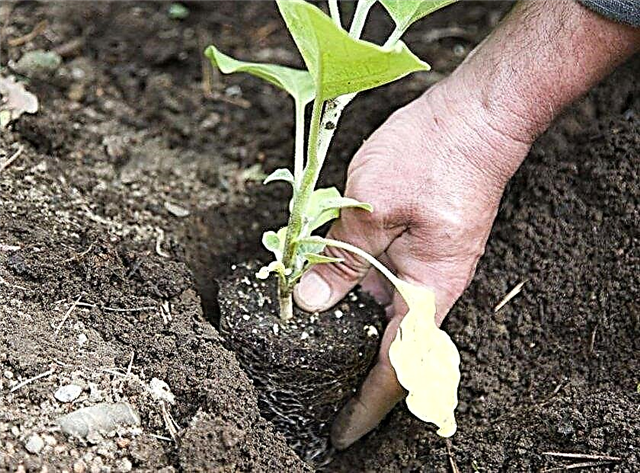 In cold areas, seedlings should be dived under film shelters not earlier than June. The site for white eggplants is selected well-lit, protected from all sides from the wind. The best neighbors for eggplant are legumes. Soil preparation on the site is carried out in two stages in autumn and spring.
In cold areas, seedlings should be dived under film shelters not earlier than June. The site for white eggplants is selected well-lit, protected from all sides from the wind. The best neighbors for eggplant are legumes. Soil preparation on the site is carried out in two stages in autumn and spring.
In autumn, soil is dug 20 cm deep, then a solution of copper sulfate is introduced, a week later fresh manure of 10 kg / m² and a mixture of peat and sand in the same amount are introduced. After that, the soil is again dug up.
Important! Eggplants are not moisture-loving crops and begin to hurt when soil moisture increases. To avoid this, immediately after planting, you need to organize a mulch layer of 8-10 cm on the bed.
In the spring, a similar manipulation is carried out, only Fitosporin is introduced instead of copper sulfate, according to the instructions, and manure or compost diluted 1: 1 with water is used as fertilizer. The planting scheme is selected depending on the size of the bushes of a particular plant. Between plants leave a distance of at least 60 cm.
Watering is carried out once a week for young plants and 2 times for adult specimens. Water is used warm (from + 20 ° C). Watering is carried out using a watering can with a long nose under the root. After each moistening of the soil, the soil is loosened to a depth of 5 cm near the stem and 10 cm between rows. This procedure helps protect plants from the spread of pests and fungal diseases.
Fertilizers are combined with watering and spend 3 times per season:
- 10 days after planting - a glass of compost with the addition of 1 tbsp. l ash on each bush (to be repaired in the soil after watering);
- 20 days after the first - 50 g of superphosphate + 5 g of potassium salt dissolved in 10 l of water for each m²;
- in the period of fruit setting - a yeast solution with nettles - per 10 l of water 12 g of yeast + 1 tbsp. sugar + 200 g nettle (insist 3 days, strain dilute with water 1: 1).
White-fruited eggplant varieties are notable for interesting taste. Compared to traditional dark purple varieties, they are more demanding on heat and soil quality. But, this does not at all prevent getting a high-quality crop while observing elementary agrotechnical methods.


